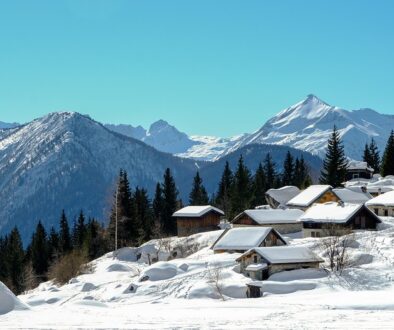Mastering the Wild: Essential Wilderness Survival Skills for Every Adventurer
Article by: Suzette Morshead
Introduction
In a world increasingly dominated by technology, many adventurous souls are drawn to the idea of escapism and the raw beauty of the wilderness. This call to nature often ignites a desire for adventure, prompting individuals to explore the great outdoors—camping, hiking, and sometimes, challenging themselves in rugged terrains. However, the allure of the wild comes with its own set of risks. Mastering essential wilderness survival skills is crucial for anyone looking to enjoy and survive the wild safely.
Having had my share of exhilarating, as well as terrifying experiences, I want to share vital skills and lessons learned during my own adventures, so you can confidently embrace the wilderness.
1. Understanding Your Environment
The first step to surviving in the wild is developing a deep understanding of your surroundings. Familiarize yourself with the local flora and fauna, weather patterns, and potential hazards.
Personal Reflection
On my first solo hiking trip in the Pacific Northwest, I stumbled upon a serene lake surrounded by towering pines. It seemed heavenly, but I swiftly discovered that beauty can be deceptive. As dusk fell, I felt a drop in temperature that I hadn’t anticipated. Suddenly, I was reminded of how essential it is to understand not only the beauty of a landscape but also its threats.
2. Build a Shelter
When you find yourself in an unfamiliar wilderness, building a shelter should be your top priority. Depending on the environment, you may choose a natural shelter like caves or fallen trees, or construct your own using branches, leaves, and other natural materials.
Techniques
- Lean-To: An effective design using a sturdy branch propped up against a tree.
- A-Frame: Great for rainy environments as it sheds water quickly.
During a particularly memorable camping trip, I attempted to make a lean-to shelter. I felt proud until a sudden downpour hit, and I learned the hard way about the importance of a waterproof roof. My makeshift shelter quickly turned into a mini waterfall. Since that day, I’ve always tested my shelter for water resistance before trusting it in heavy rain.
3. Fire Crafting
Fire is a vital survival tool for warmth, cooking, and signaling for help. Mastering different methods to start a fire will prepare you for various conditions.
Techniques
- Friction: Using tools like a bow drill or hand drill.
- Flint and Steel: This classic method works well in most conditions.
- Firestarter Kits: Having a waterproof firestarter can be a lifesaver.
One of my most memorable fire-starting attempts occurred during a snow-laden winter hike. Faced with the challenge of starting a fire in the cold, I resorted to the bow drill method. After several frustrating, exhausting hours, I finally struck ember to kindling. Watching that small flame grow into a roaring fire filled me with a sense of achievement and warmth that only nature can provide.
4. Water Procurement
Finding safe drinking water is crucial for survival. Knowledge of water sources, as well as purification methods, is essential.
Techniques
- Boiling: The most effective way to purify water.
- Filter Systems: Portable filters can make water safe to drink quickly.
- Solar Distillation: Using the sun’s heat to evaporate and collect clean water.
I remember a hike in a national park where I underestimated the need for water. After running low, I found a creek and was tempted to drink directly from it. Thankfully, a fellow hiker educated me on the dangers of untreated water. I set up a boiling system instead, learning that the wait was a small price to pay for safe hydration.
5. Navigation Skills
Whether using a compass, map, or GPS, knowing how to navigate effectively can keep you out of trouble. In a world with digital devices, forgetting fundamental navigation skills can lead to confusion and danger.
Techniques
- Map Reading: Understand topographical lines and landmarks.
- Using a Compass: Learn the basics of compass navigation.
- Natural Navigation: Know how to follow the sun and stars if technology fails.
On a trip to the Rockies, I relied solely on my GPS, expecting it to guide me without fail. My device, however, died unexpectedly, leaving me disoriented. Panic crept in, but I recalled the basics of map reading from past training sessions. Using the sun’s position and my surroundings, I found my way back to the campsite, forever respecting the old ways of navigation.
6. First Aid Knowledge
In the wilderness, injuries can happen at any time, and knowing basic first aid can save a life. Familiarize yourself with the treatment of cuts, scrapes, insect bites, and fractures.
Prerequisites
- Basic First Aid Kit: Always carry a kit and know how to use its contents.
- CPR and First Aid Training: Taking a class can prepare you for emergencies.
One unforgettable trip involved a case where a friend sustained a snake bite while hiking. Having taken a first aid course previously, I remained calm and followed the techniques taught: keeping the affected limb still and getting help immediately. It emphasized the importance of being prepared, as it can turn a dire situation into a manageable one.
Conclusion
Mastering wilderness survival skills is not merely about learning techniques but cultivating a deep respect and understanding for the natural world. Each adventure teaches us something new, making us better prepared for future challenges.
Embracing the wilderness offers growth, adventure, and unforgettable memories. With the right skills in your toolbox, nature can be not just a challenge but a haven of exhilaration and discovery. So gear up, respect the wild, and step out into the beautiful unknown! Your adventures await.
Mastering the Wild: Essential Wilderness Survival Skills for Every Adventurer
Article by: Suzette Morshead


